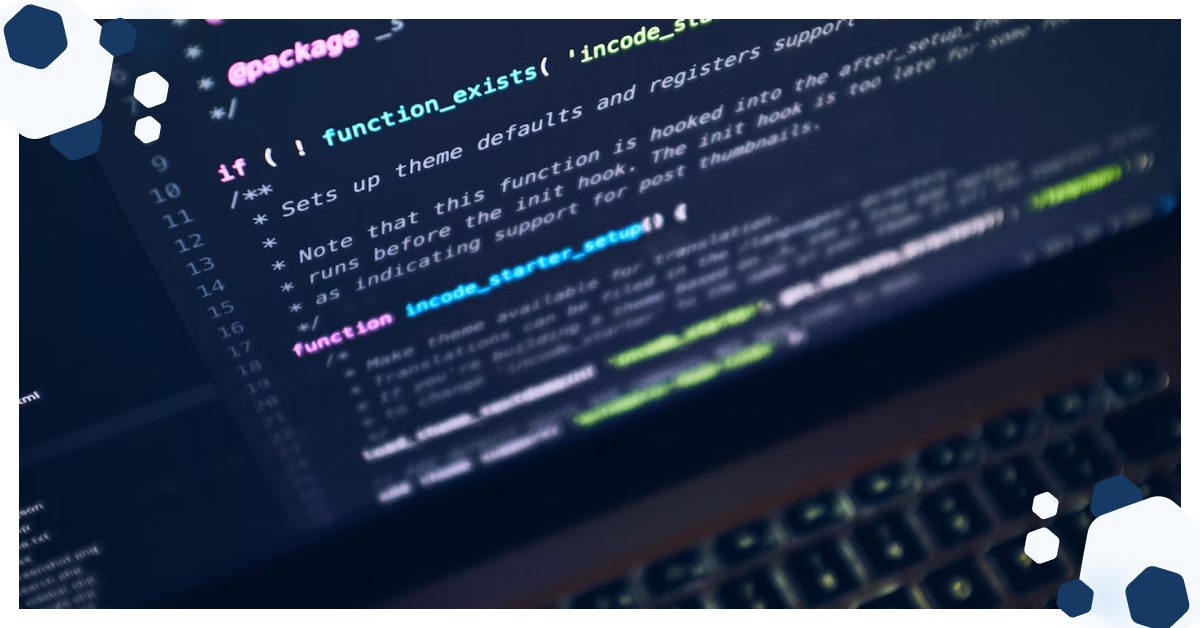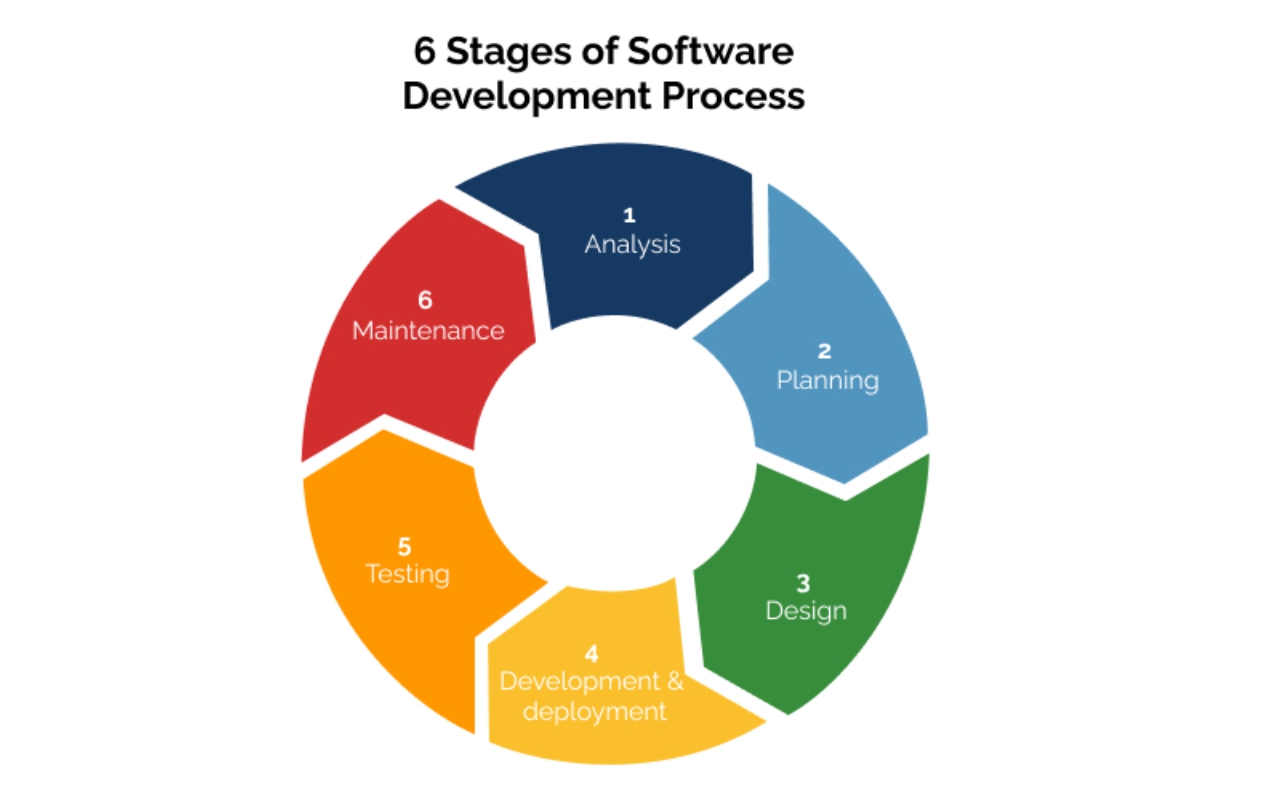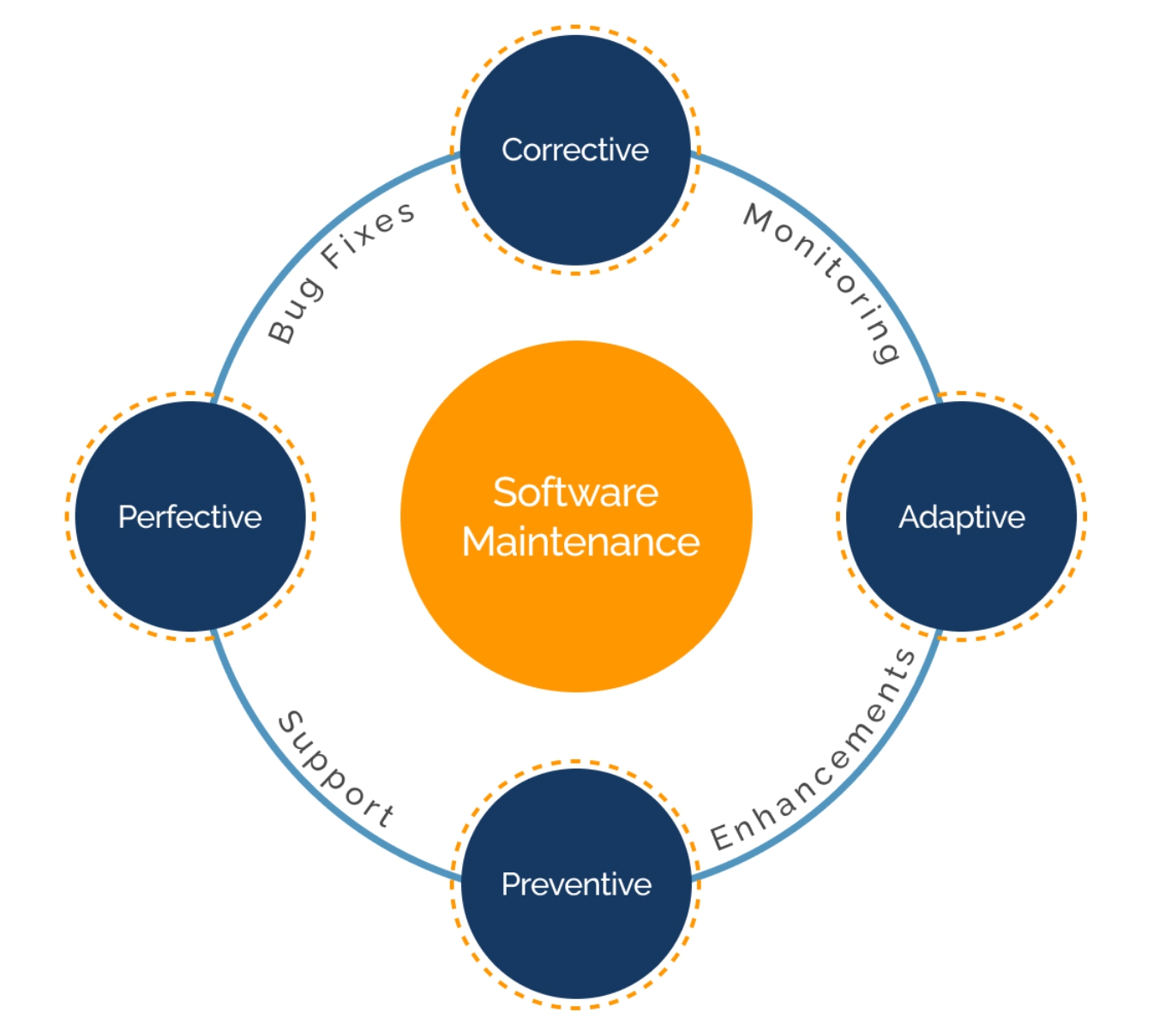The Needs and Practicalities of Software Maintenance
Combining the development efforts and the ongoing maintenance of your software is key to ensuring that you have a robust, continuously improving and evolving solution. Having a software maintenance plan is just as important as the initial development. Professionally managed maintenance allows for continual improvement and adaptation to changing business needs and technological advancements. Software maintenance put simply from Encyclopedia.com is “the process of modifying a software system or component”.
Contrary to popular belief, the lifecycle of your custom software development does not end at launch, it has in reality just begun. Here's why!
Key Benefits of a Software Maintenance Plan

- Ensures the continuous enhancement of your system’s performance levels.
- Eliminates progressive performance degradation.
- Extended software life.
- Enables a continuous process of improvement to sustain a great user experience.
- Allows for modification of the software as user’s need change with time.
- Facilitates edge case resolution
- Reduction of failure rates over time.
- Improved cost efficiency by identifying and fixing issues early on
- Reduce cyber security risks fixing new security vulnerabilities in order to maintain your data security over time.
At OpenApp we do this by managing the transition from our software development team to our support and maintenance staff. A smooth transition helps ensure the continuous evolution, and including any necessary expansion, of your software system. This reduces the risks that are typically seen when development teams are so focused on finishing a project that they fail to plan for post-project management and maintenance.
Software Updates, Security Patches & Upgrading Security
Software updates are very much a part of our day-to-day lives and are more important than you might think. Update requests are regularly seen on our smartphones, tablets, laptops and desktops/ PCs. While it is tempting to update software requests at a later time, it is advisable to do them as soon as possible in order to best secure your devices against the latest cyber security threats.
Updates contain security patches as well as new security features. Patches are beneficial because they fix discovered flaws in products which prevent malicious attacks. Upgraded security features make your product less open to attack.
Regular software upgrades, security patches and upgrading security features are essential for protecting your software, your data, and your organisation's reputation.
A software maintenance plan helps ensure your project delivers your internal users an on-going great user experience and that the associated costs, resourcing, technical analysis, testing and continuous development requirements and expectations of your system are adequately addressed.
Maintenance in the Software Development Life Cycle (SDLC)
Its important to know that your software will continuously evolve post deployment. The maintenance phase of the software development life cycle is where the system goes into operation and where maintenance and support teams perform analysis and support the performance of the system. The overriding purpose of software maintenance is to continually find and fix faults and enhance the system with modifications by deploying and updating software applications. Software maintenance is an ongoing process and it should be considered and budgeted for the entire life of the product.
Below is a graph showing the six stages of the software development process.

Every Software Development Life Cycle should cover these six steps:
- Analysis
- Planning
- Design
- Development & deployment
- Testing
- Maintenance
What types of software maintenance are found in the software development life cycle?
There are four different types of software maintenance:
• Corrective software maintenance
The purpose of corrective maintenance is to address errors and faults in the design code, system of rule & logic code. An example of this would be if a security patch is required and a particular code needs to be be updated.
• Adaptive software maintenance
This allows us to stay on top of technical knowledge, hardware, organisation policies and security threats while ensuring that software is modified to keep it usable throughout its lifecycle.(Example new payment system on online platform)
• Perfective software maintenance (
Facilitates the enhancement of functionality and the evolution of the software requirements. This includes the removal of defunct functionally and aids continuous improvements. (Example – addition of a loyalty card on system)
• Preventative software maintenance
Focuses on reducing the deterioration of the software by restructuring and updating code for future use. This proactive maintenance increases the understanding and ultimately the maintainability of the software while reducing the potential for issues in the long term.

The Transition from Software Development To Software Maintenance
Throughout our 20 years of experience with software development we have helped our clients through the complications and difficulties that arise when transitioning a project from development to maintenance teams. Over that time we have developed and refined processes to enable as smooth a transition as possible.
We do this by:
• Building teams with competent team leaders.
Multifunctional teams which include development leads and business analysts actively engage with the maintenance team throughout the development stage. This enables an organic product knowledge build-up which can help reduce risks and aid a seamless transition.
• Engaging all stakeholders at an early stage.
A team leader from our maintenance team is consistently kept informed of all developments throughout the entire development process to build up their product knowledge further assisting and smoothing project transition.
• Ensuring that there are open channels of communication.
Aligns the maintenance teams with project goals providing details of what’s expected of them as well as helping them understand why decisions are being made and what is being implemented.
• Developing consistent and accurate documentation procedures.
Capturing accurate details and specifics helps with the transition and improves, compliance, reporting and the accuracy of the product for current and future use.
• Budgeting for the transition at the beginning of each project
Budgeting is paramount to the future success of your solution. Industry norms show that you can expect to spend about 20% of the cost of development to adequately maintain your software.
Software Maintenance Project Knowledge Transfer
Documentation alone does not provide sufficient detail in the transfer of knowledge process. A key solution for this is adequate human resource planning. The project changeover transition planning needs to take into consideration the time required for moving from development to maintenance management including considering the different people or teams involved.
At OpenApp we ensure that a development team member is available to the maintenance team to maximise the project knowledge transfer. This has proved to be extremely valuable to the evolution, continuous improvement and assists with the establishment of best practices' throughout our client projects.
To find out more about our custom software solutions, or to talk to us about similar work contact us here.
Latest News
Sorry, we couldn't find any posts. Please try a different search.
IQVIA (NYSE:IQV) is a leading global provider of advanced analytics, technology solutions and contract research services to the life sciences industry dedicated to delivering actionable insights. Learn more at www.iqvia.com.

Copyright © 2024 | Privacy Policy | Information Security Policy
OpenApplications Consulting Ltd. Registered in Ireland No. 355595

